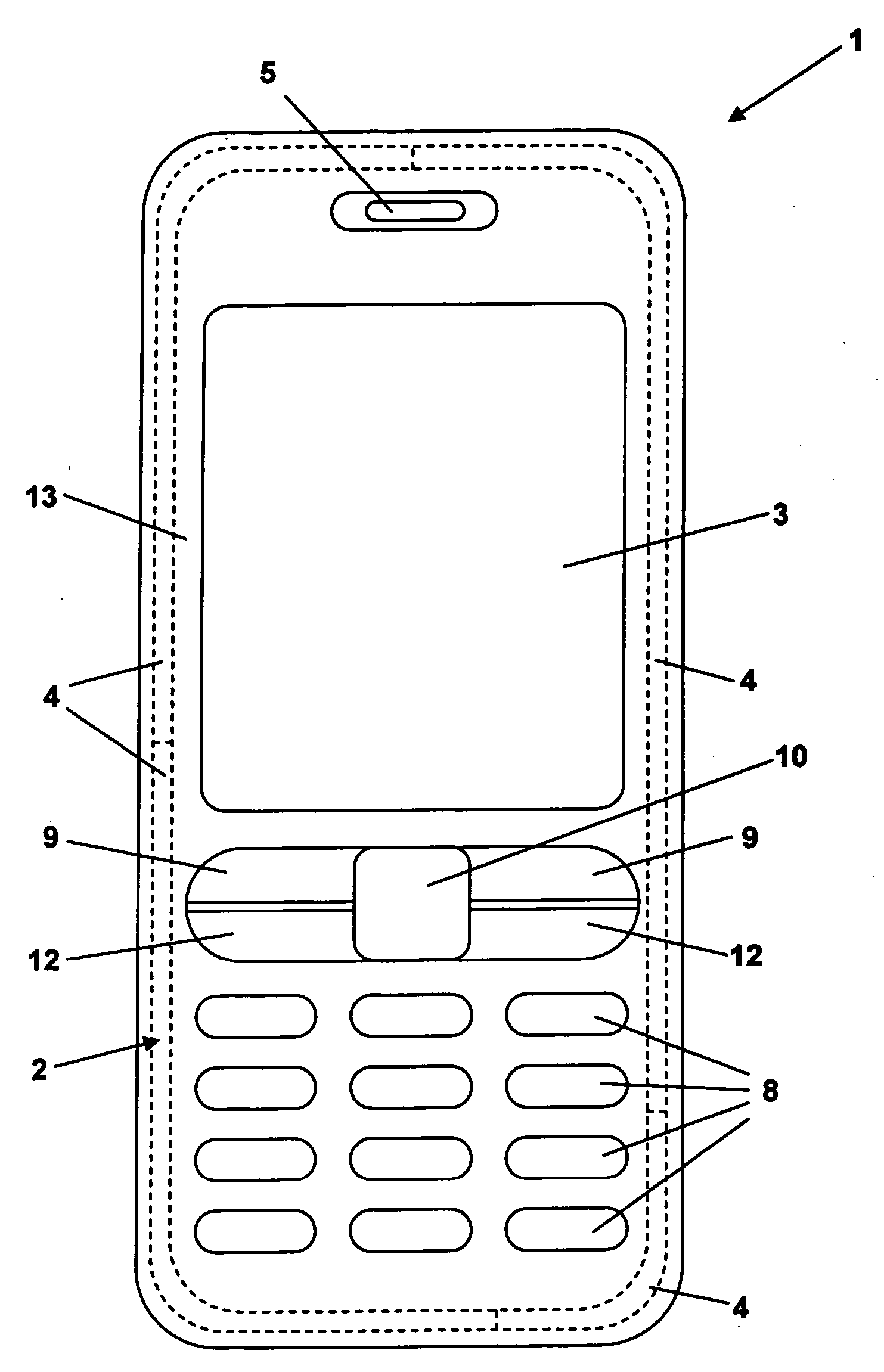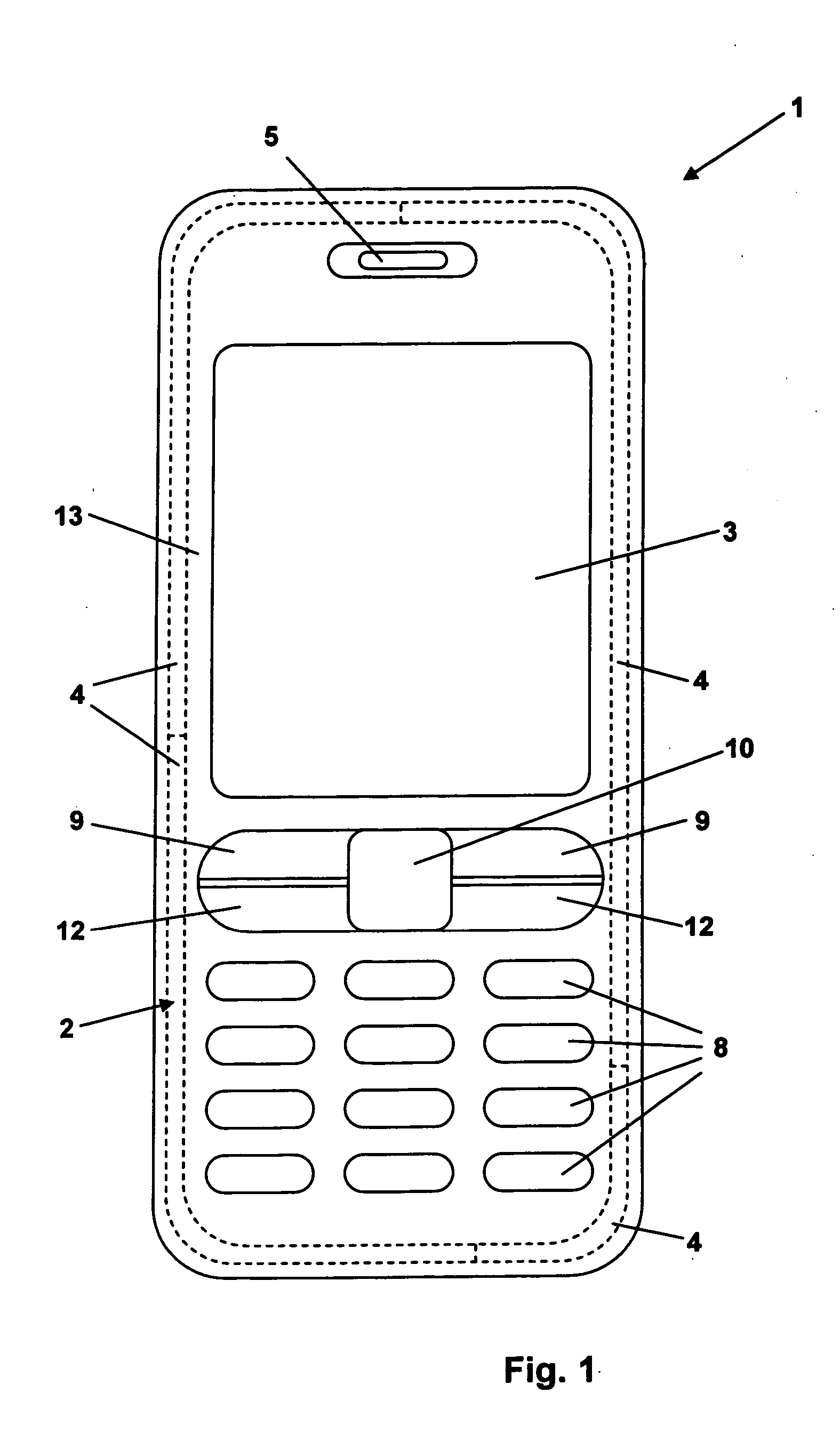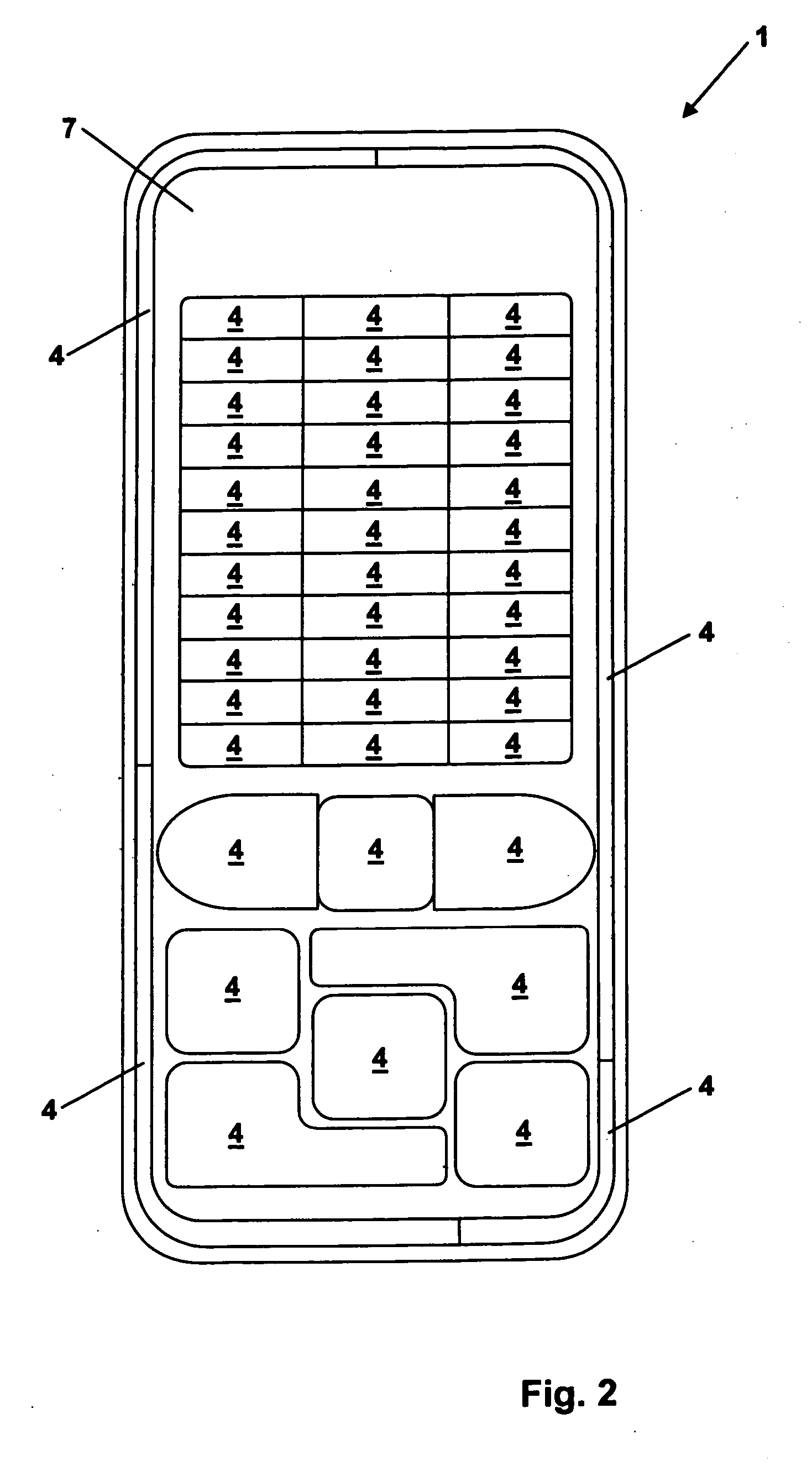Electroluminescent lighting system
a technology of electroluminescent lighting and lighting system, which is applied in the direction of lighting and heating apparatus, discharge tube luminescnet screens, instruments, etc., can solve the problems of increasing the intensity of the panel over time, affecting the effect of the lighting effect, so as to reduce the flaring problem
- Summary
- Abstract
- Description
- Claims
- Application Information
AI Technical Summary
Benefits of technology
Problems solved by technology
Method used
Image
Examples
Embodiment Construction
)
[0038] The EL panels according to the present invention can advantageously be used in combination with mobile communication terminals. Such a terminal in the form of a hand portable phone, preferably a cellular / mobile phone, will be described hereafter.
[0039]FIG. 1 shows a mobile phone according to the invention. The phone 1 comprises a user interface having a keypad 2, a display 3, an on / off button (placed on top, not shown), a speaker 5 (only the openings are shown), and a microphone 6 (not shown, opening for the microphone is placed on the bottom of the phone). The phone 1 according to the preferred embodiment is adapted for communication via a cellular network, such as the GSM 900 / 1800 / 1900 MHz of the G3 network.
[0040] The keypad 2 has a first group of keys 8 as alphanumeric keys, by means of which the user can enter a telephone number, write a text message (SMS), write a name (associated with the phone number), etc. Each of the twelve alphanumeric keys 8 is provided with a f...
PUM
 Login to View More
Login to View More Abstract
Description
Claims
Application Information
 Login to View More
Login to View More - R&D
- Intellectual Property
- Life Sciences
- Materials
- Tech Scout
- Unparalleled Data Quality
- Higher Quality Content
- 60% Fewer Hallucinations
Browse by: Latest US Patents, China's latest patents, Technical Efficacy Thesaurus, Application Domain, Technology Topic, Popular Technical Reports.
© 2025 PatSnap. All rights reserved.Legal|Privacy policy|Modern Slavery Act Transparency Statement|Sitemap|About US| Contact US: help@patsnap.com



